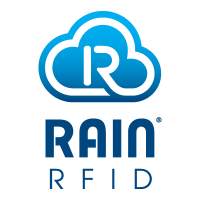 Four technology companies have teamed up to form RAIN RFID, an organization whose mission is to promote the adoption of EPC ultrahigh-frequency (UHF) RFID. The organization—founded by Impinj, Intel, Google and Smartrac, and hosted by automatic-identification trade association AIM—is focused on driving UHF RFID deployment through education, testing and support of technology developers and end users. The group announced its launch today at RFID Journal LIVE! 2014, taking place this week in Orlando, Fla.
Four technology companies have teamed up to form RAIN RFID, an organization whose mission is to promote the adoption of EPC ultrahigh-frequency (UHF) RFID. The organization—founded by Impinj, Intel, Google and Smartrac, and hosted by automatic-identification trade association AIM—is focused on driving UHF RFID deployment through education, testing and support of technology developers and end users. The group announced its launch today at RFID Journal LIVE! 2014, taking place this week in Orlando, Fla.
The word RAIN—an acronym derived from RAdio frequency IdentificatioN—is intended as a nod to the link between UHF RFID and the cloud, where RFID-based data can be stored, managed and shared via the Internet. With a six-member board consisting of an AIM liaison, four elected directors and a president, the alliance was conceived following standards organization GS1‘s ratification of the UHF Gen2v2 standard in November 2013 (see GS1 Ratifies EPC Gen2v2, Adds Security Features, More Memory). That ratification, says Chris Diorio, RAIN’s chairman of the board and Impinj’s chief strategy and technology officer, signifies further maturity in the UHF market, at the same time that item-level UHF RFID tagging for the retail sector has grown exponentially.


 Home
Home